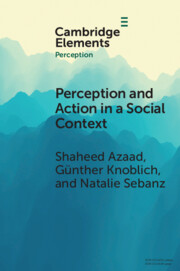Element contents
Perception and Action in a Social Context
Published online by Cambridge University Press: 26 November 2021
Summary
- Type
- Element
- Information
- Series: Elements in PerceptionOnline ISBN: 9781009029049Publisher: Cambridge University PressPrint publication: 23 December 2021
References
- 10
- Cited by



